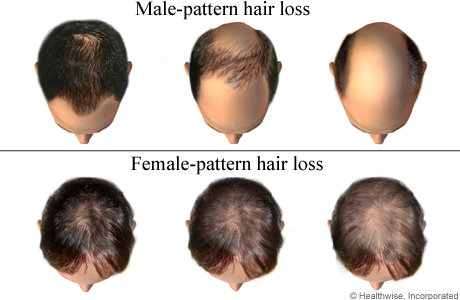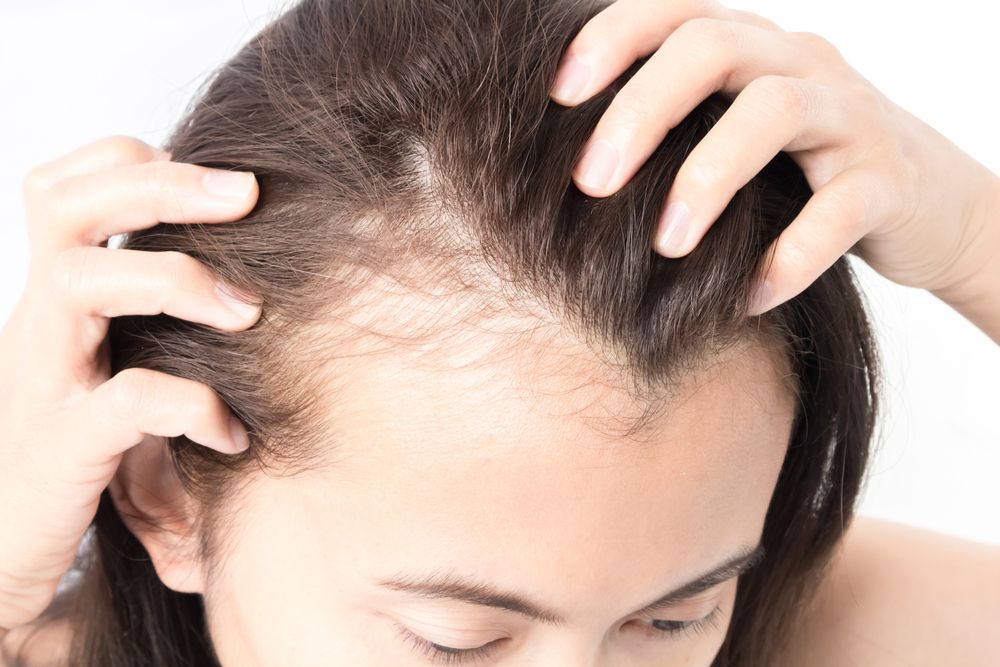
Synonyms: male pattern baldness, androgenetic alopecia, genetic hair loss.
Hair loss (alopecia) is common as people age, but the pattern of loss is different in males
and females. Androgens play a pivotal role in male pattern hair loss, but their role in
female pattern hair loss is less certain, and other mechanisms may be involved.
Genetically determined susceptibility is important (prevalence varies in different
populations).
Male pattern hair loss

• About 25% of men begin to lose hair by age 30, and 50% by age 50.
• Androgens cause follicular miniaturization, with progressive decrease in the width of
the hair shaft.
• Receding frontal hairline is common, particularly on the temples (may commence in the
mid teens).
• Gradual thinning of the hair on the vertex is eventually followed by complete loss of
hair over the vertex (loss may be preceded by curling and coarsening of hair—acquired
progressive kinking).
• A rim of hair is retained around the back and sides of the scalp (occipital follicles are
not dependent on androgens and are a source of follicles for hair transplants).
Female pattern hair loss

• Female pattern loss occurs any time after the onset of puberty. Prevalence varies widely
but increases to 29–42% in women aged >70.
• Some report increased shedding; others complain of gradual diffuse thinning over the
crown, usually with sparing of the frontal hairline.
• Women may say ‘I can see my scalp’ or complain central parting gets sunburnt. There
may be a family history of androgenetic alopecia.
• Density of hair on top of the scalp is reduced in a diffuse central pattern. Other patterns
include accentuated loss frontally or loss localized to the vertex. Hair pull test may be
positive in early loss, but usually negative.
• Temporal thinning is common, but, unlike men, women do not progress to complete
balding on the vertex. In advanced female pattern hair loss, when hair may be very sparse
over the top of the scalp, a rim of hair is still retained along the frontal margin.
• Rapidly progressive hair loss in a male pattern suggests virilization— look for other
signs/symptoms, e.g. oligomenorrhoea or amenorrhoea, hirsutism, severe acne, or
cliteromegaly.
• Some hyperandrogenic women show female pattern of hair loss.
• Exclude other causes of diffuse non-scarring alopecia.
• Ask about menstrual history, dieting, recent illnesses, and drugs.